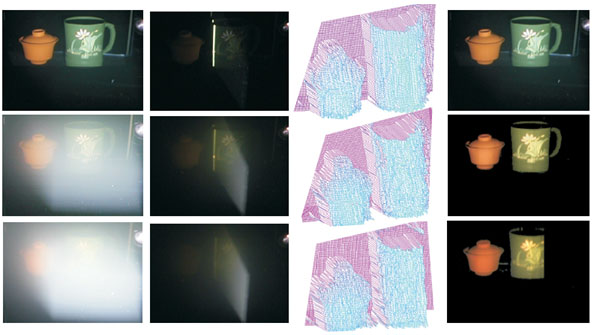IEEE ICCV 2005

Virtually all structured light methods assume that the scene and the sources are immersed in pure air and that light is neither scattered nor absorbed. Recently, however, structured lighting has found growing application in underwater and aerial imaging, where scattering effects cannot be ignored. In this paper, we present a comprehensive analysis of two representative methods - light stripe range scanning and photometric stereo - in the presence
of scattering. For both methods, we derive physical models for the appearances of a surface immersed in a scattering medium. Based on these models, we present results on (a) the condition for object detectability in light striping and (b) the number of sources required for
photometric stereo. In both cases, we demonstrate that while traditional methods fail when scattering is significant, our methods accurately recover the scene (depths, normals, albedos) as well as the properties of the medium. These results are in turn used to restore the appearances of scenes as if they were captured in clear air. Although we have focused on light striping and photometric stereo, our approach can also be extended to other methods such
as grid coding, gated and active polarization imaging.
-paper-
[ PDF 2.8 MB ] [ bib ]
-video-
[ MP4 30.0 MB ]